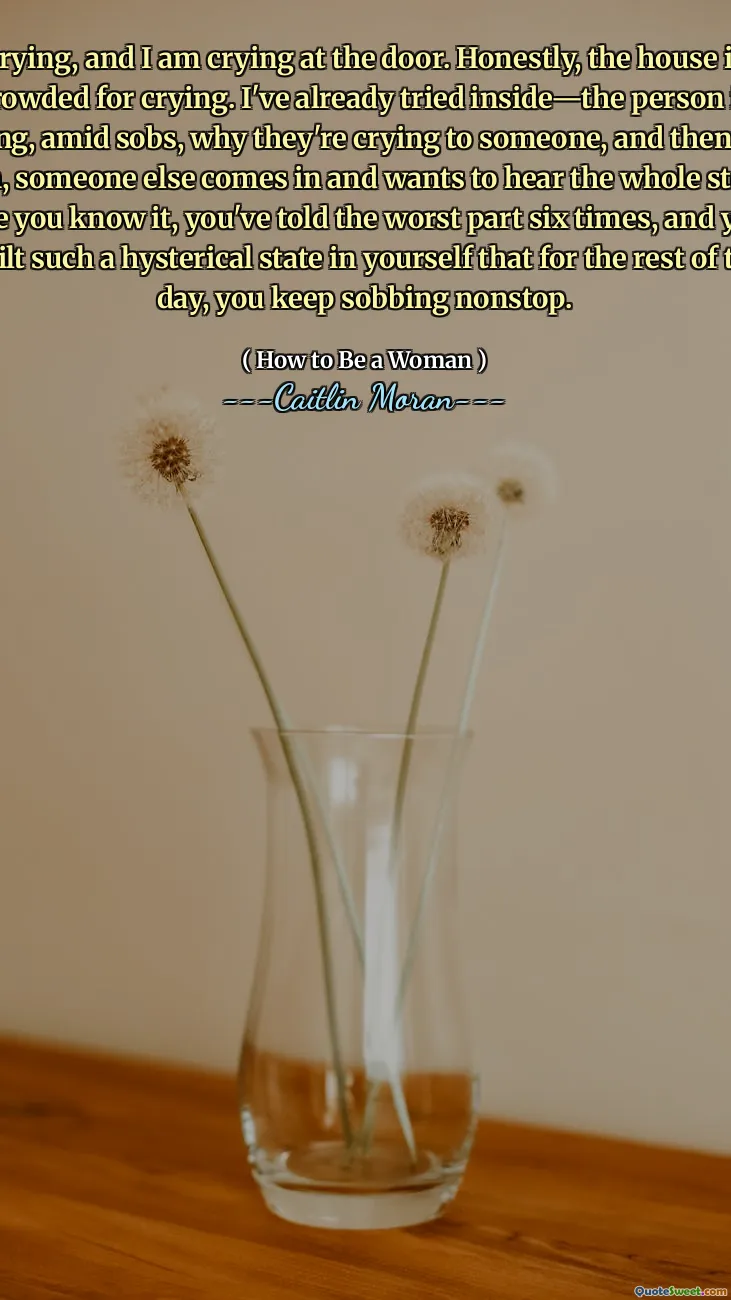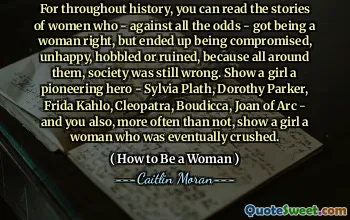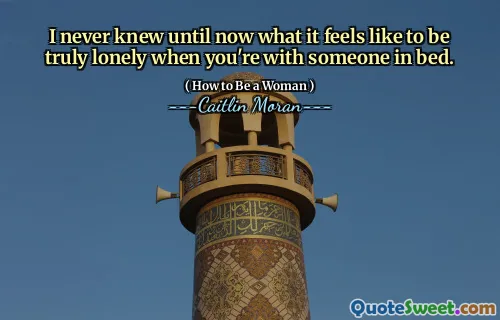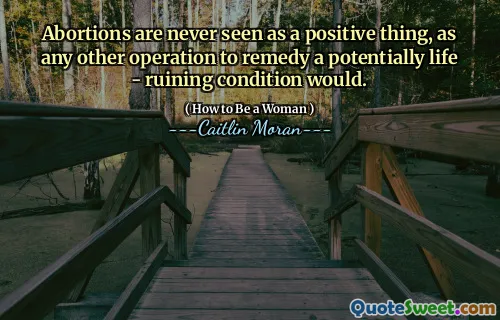
I'm crying, and I am crying at the door. Honestly, the house is too crowded for crying. I've already tried inside—the person is explaining, amid sobs, why they're crying to someone, and then halfway through, someone else comes in and wants to hear the whole story, and before you know it, you've told the worst part six times, and you've built such a hysterical state in yourself that for the rest of the day, you keep sobbing nonstop.
This quote vividly captures the overwhelming nature of emotional distress within a crowded and perhaps chaotic environment. It resonates deeply because it highlights how vulnerability can be further complicated when shared among others, especially in an overcrowded space. The imagery of crying at the door reflects a desire for solitude or a private space to process feelings, but the house's overcrowding makes genuine self-expression almost impossible. The process of repeatedly explaining one’s pain to different listeners underscores how emotional burdens can become amplified through repetition and lack of understanding. It also depicts the spiral of hysteria—once triggered by a stressful situation, emotional exhaustion mounts as the same story is retold multiple times, and inner peace becomes elusive. Often, when individuals face emotional turmoil, they seek solace and escape, and the frustration of not finding a quiet refuge intensifies feelings of helplessness. This quote reminds us that mental and emotional health are fragile, and that environments play a significant role in either soothing or aggravating distress. It makes us consider the importance of empathy, patience, and creating personal spaces where one can process grief or pain without judgment or interruption. In essence, it captures the universal struggle to find peace amidst chaos and the burdens that come with sharing one's inner struggles in a world that is often too noisy or indifferent to truly listen.










